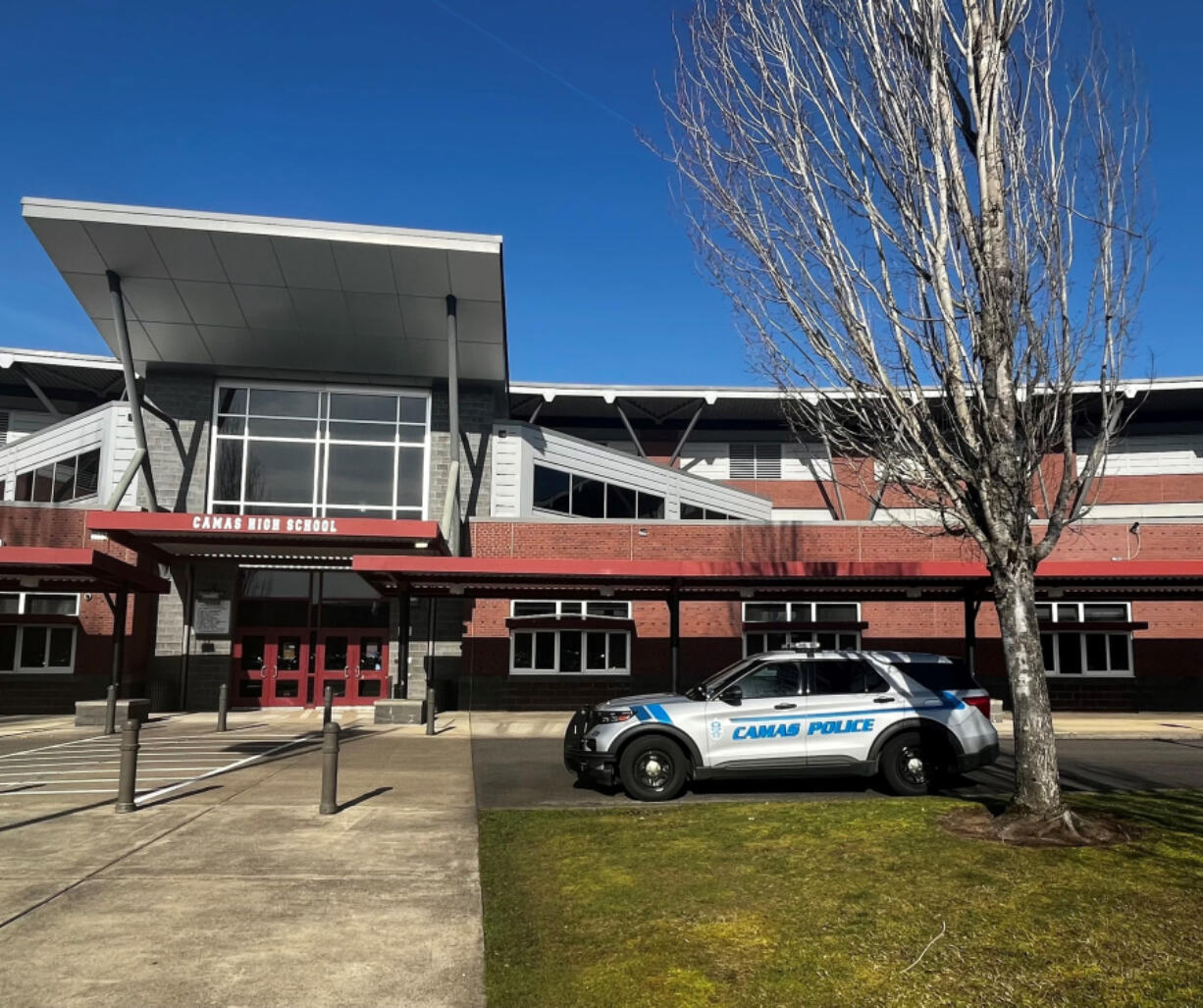CAMAS — After three false alarms from Camas School District security software in three months, district leaders are addressing community concerns.
“Three times in three months is more than we’ve ever had before,” Camas school board member Erika Cox said during a Feb. 26 meeting.
Board member Tracey Malone said she had “a lot of people reach out” following the most recent false alarm at Camas High School on Feb. 23, but said the district has learned valuable lessons from the false alarms.
“The good news is that the actual technology has been perfect,” Superintendent John Anzalone said. “The technology isn’t flawed. It’s really just a need to work through bugs that no one could have predicted. And we’re crossing our fingers that most of these issues are now taken care of.”
Gun-shaped objects
The district’s new security software, artificial intelligence-assisted ZeroEyes, uses the district’s security cameras to spot gun-shaped objects and alert district and school leaders to possible threats in less than a minute. An additional piece of emergency-management software, CrisisGo, can alert classroom teachers to possible dangers, implement school lockdowns and even help reunite families with students after an emergency event.
ZeroEyes passes images that AI catches to former military or law enforcement personnel who scan the photo for legitimate threats before sending an alert to either the superintendent — if the threat level is low and the object is likely not a firearm — or to building administrators if the threat is more urgent.
Anzalone said the first of the three false alarms began with a misunderstanding at Odyssey Middle School in early December 2023.
“ZeroEyes sent a community newsletter to their clients across the world,” including Odyssey staff, Anzalone said. “Unfortunately, the newsletter used a stock photo of someone carrying an assault rifle outside sliding glass doors.”
An Odyssey staff member saw the photo and mistakenly believed the photo was related to the middle school at the former Sharp Labs building, which also has sliding doors.
“They were being overly safe,” Anzalone said of the Odyssey employee. “They thought, ‘Oh my God, this is live’ … and the school was put into lockdown.”
Anzalone said that although the threat wasn’t real, the response from students, staff and Camas police was “phenomenal.”
“The students and staff and SROs were great,” Anzalone said.
The next incident was Jan. 2 at Skyridge Middle School after inclement winter weather led to flooding inside the school, which activated the security system while students were gathering for the first classes of the day.
“They announced it was not a real event,” Facilities Director Sherman Davis said of the Skyridge security alert, adding that school leaders still completed the actions that would have been required if the alert had been real.
“I just spoke to the Skyridge principal about this today,” Anzalone told The Post-Record on Tuesday. “They had never done a lockdown drill when the kids weren’t in class, so they got to see how the staff reacted.”
On Feb. 23, facilities staff were repairing a panic button that had been bumped the night before and needed to be reset, Davis said.
Anzalone said maintenance personnel had done the same repair during school hours before, but district leaders have realized that security-related maintenance and repair work should be done during hours when students are not in the building, just in case a repair triggers a schoolwide security alarm.
“We learned it is best to stay away from these safety repairs during the school day,” Anzalone said. “It’s not ideal. We want everything working at top level, but also don’t want to cause a panic.”
Anzalone said the incidents showed that the district’s security systems are working.
“We realized our training works and our kids and staff are prepared,” Anzalone told the school board in February. “But we don’t want any more of these (false alarms) because we don’t want students and staff thinking, ‘Oh, it’s just a boy who cried wolf’ type of thing. ”
The district is using technology-capital facilities levy money to pay for the safety software. And at an annual cost of $2,600 per building for ZeroEyes and $20,000 per year for CrisisGo, Davis said, the security programs are more cost-effective than installing just one door with a metal detector.
“We don’t want our schools to look like prisons,” Anzalone said.



